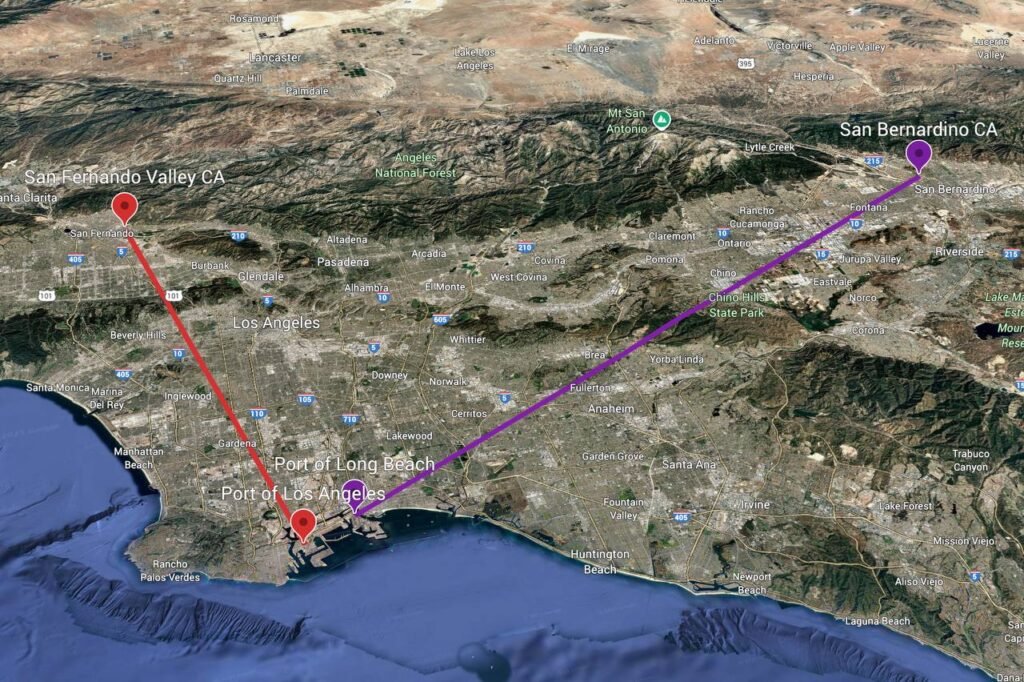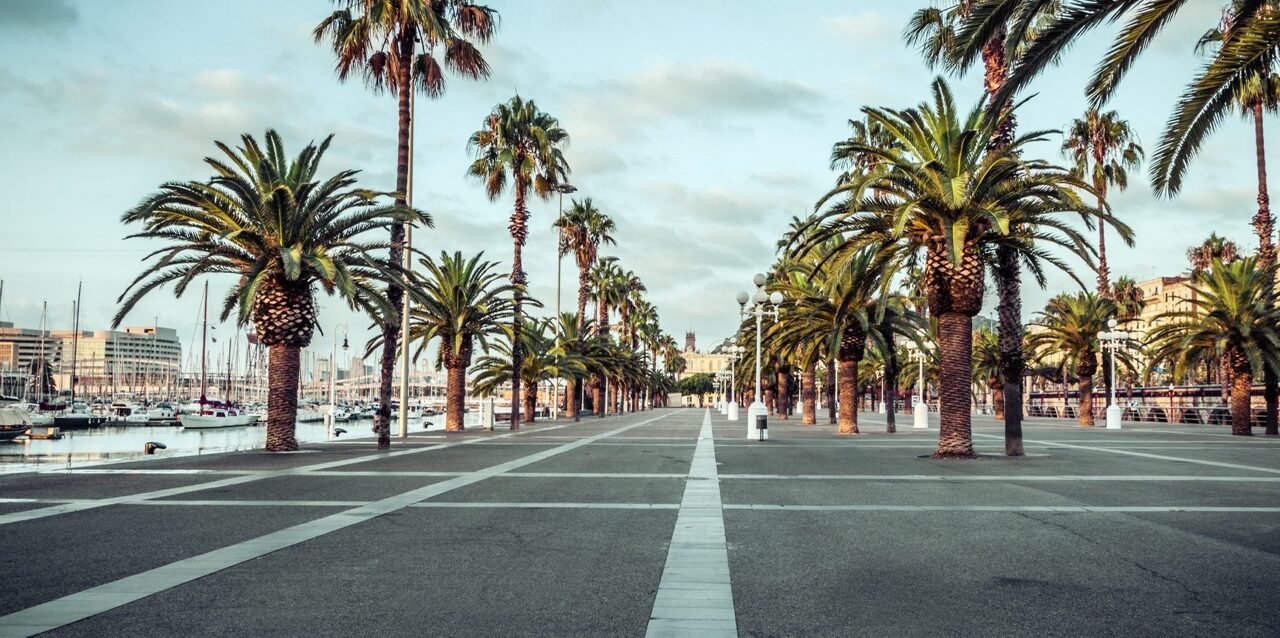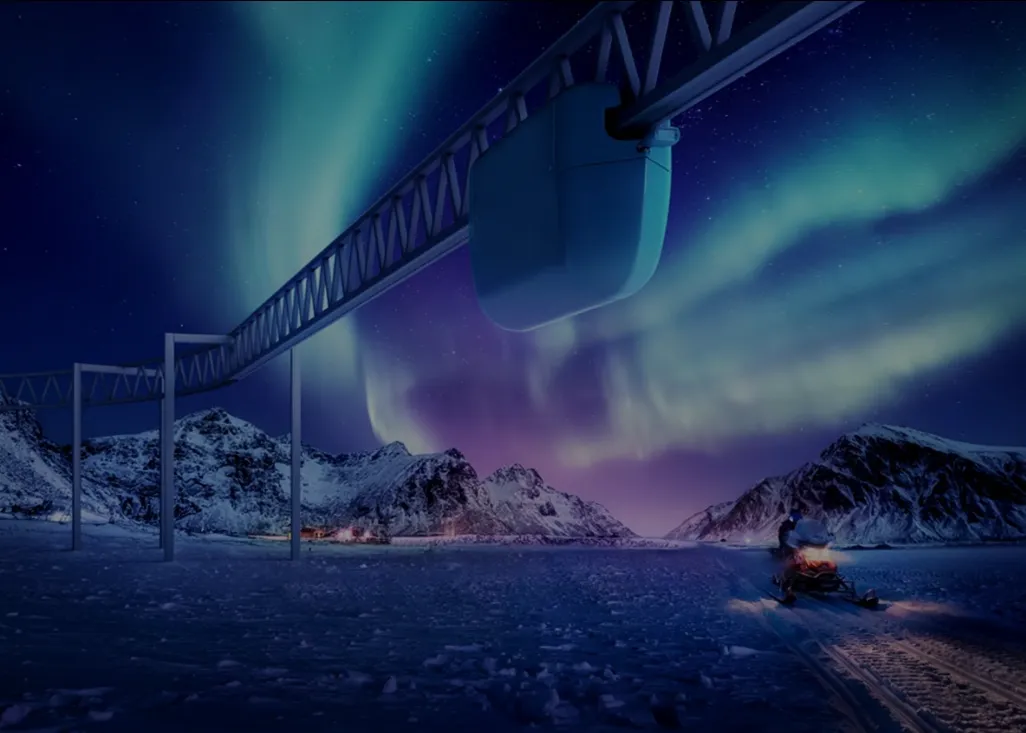Executive Summary
Long Beach, California, faces a ticking clock: with a projected population increase to nearly 500,000 by 2050, the city’s already strained transportation systems—plagued by inefficient trucking, outdated infrastructure, and archaic logistics—threaten to spiral into economic stagnation, social inequities, and environmental catastrophe. Without bold intervention, this growth could saddle the city with billions in infrastructure costs, heightened emissions harming public health, and a drag on California’s Gross State Product (GSP) through lost productivity and accidents. Yet, hope surges on the horizon with the American Dream Rail system, a scalable, high-speed passenger and freight rail connecting the Port of Long Beach to a new distribution center in San Bernardino, 74 miles away. Fully operational by 2035, this innovative solution promises to slash trucking dependency, cut goods transport costs by 50%, halve delivery times, and reduce emissions by 75%—all while generating millions in annual revenue for the city through an Air-Use tax. By relocating freight processing, it unlocks port efficiency, boosts economic vitality, and enhances quality of life. The before-and-after analysis reveals stark contrasts: pre-rail inefficiencies could cost $10-15 billion in cumulative losses by 2050, while post-rail implementation yields $5-8 billion in savings, propelling Long Beach toward a prosperous, sustainable future. This isn’t just a fix—it’s a gateway to American ingenuity reclaiming our roads, skies, and economy.

Introduction
Imagine a Long Beach where families zip through the city without gridlock nightmares, goods flow seamlessly from port to doorstep, and the air is cleaner for generations to come. But today, as population swells and freight demands explode, our transportation backbone is cracking under pressure. This case study dives deep into the urgent crisis of marginal population growth in Long Beach by 2050, dissecting its economic and social toll on citizen mobility and goods movement. We paint a vivid “before” picture of mounting burdens—inefficient trucking, obsolescent roads, and archaic systems—then pivot to the “after” transformation via the American Dream Rail system. This scalable rail service, linking the Port of Long Beach to a San Bernardino distribution center, doesn’t just mitigate problems; it revolutionizes them, delivering flyover congestion relief, accident elimination, and massive cost/emission cuts. Backed by data-driven projections and optimistic foresight, we compare costs and savings, highlighting how this innovation funds itself through a $5.5 trillion national legacy project while paying dividends to the city via an Air-Use tax of 16% on $6.00 per 100-ton mile (equating to approximately $27 million annually). Urgency demands action now—Long Beach’s thriving future hangs in the balance, but with Dream Rail, victory is within reach.
Background Information
Long Beach, a bustling coastal gem with a current population of around 460,000, stands as a linchpin in California’s economy, thanks to its world-class port handling 75 million short tons of container freight annually. As the second-busiest U.S. port, it drives trade but amplifies transportation woes amid regional growth. Projections show the city’s population climbing to 495,349 by 2050, a marginal increase of about 35,000 residents from recent estimates, fueled by migration, economic opportunities, and urban appeal. This growth mirrors broader Southern California trends, where the Los Angeles-Long Beach metro area could swell to over 16 million.
Yet, the city’s infrastructure—built for a bygone era—struggles. Trucking dominates freight movement, with over 79 million short tons processed in recent years, leading to congested highways like I-710, notorious for delays and pollution. Socially, low-income communities bear the brunt, facing health risks from emissions and limited mobility options. Economically, transportation inefficiencies already cost Californians $61 billion yearly in congestion, accidents, and vehicle wear. As population rises, freight volumes could surge 20-30% by 2050, exacerbating these issues unless innovative solutions intervene.
Problem or Challenge
The projected population growth in Long Beach isn’t just numbers—it’s a looming avalanche threatening to bury the city’s vitality. By 2050, an additional 35,000 residents will amplify demands on an inefficient trucking sector, obsolescent infrastructure, and archaic systems, crippling the movement of citizens and goods. Here’s the stark “before” reality:
○ New Essential Needs for the City and People:
Expanded public transit networks, upgraded highways, smart traffic systems, and zero-emission vehicle incentives to handle increased commuter and freight traffic. Residents will need safer pedestrian/bike paths and affordable housing near jobs to reduce commute times, while the port requires modernized logistics to process growing inbound/outbound freight without bottlenecks.
○ Breakdown of Projected Costs to the City:
Infrastructure upgrades could cost $5-10 billion cumulatively by 2050, drawing from state estimates of $500 billion needed statewide for transportation rebuilding. Annual maintenance for roads alone might hit $1-2 billion, with $3.5 billion recently allocated statewide for resiliency—yet Long Beach’s share falls short amid competing needs.
○ Cost to Individual Households:
Families could face $500-1,000 annually in higher taxes and fees to fund these, plus $2,000+ in personal costs from congestion delays and vehicle repairs, based on statewide averages of $61 billion in deficient road impacts.
○ Projected Shortfalls from Anticipated Limitations :
Funding gaps of $2-5 billion could emerge due to budget constraints and population stagnation in LA County (projected 10% loss by 2070), limiting tax revenues. Aging infrastructure and climate vulnerabilities add urgency.
○ Potential Consequences for Failing to Meet Shortfalls:
Gridlock could worsen accidents (eliminating none today), social inequities deepen in polluted neighborhoods, and economic opportunities flee as businesses relocate—potentially stalling community health and growth.
○ Effect on Gross State Product (GSP):
Transportation inefficiencies might shave $7-10 billion off California’s GSP by 2050 through lost productivity, with port-specific electrification mandates alone risking $7.4 billion in NPV losses if unmanaged
○ Cost of Increased Emissions:
Trucking emissions could add $5-10 billion in health and environmental costs, with air pollution already equating to 5% of GDP and LA topping per-capita burdens. Growing freight volumes amplify diesel pollutants, exacerbating climate goals.
Without action, Long Beach risks a vicious cycle: more people, more trucks, more chaos—demanding immediate, visionary change.
Myron Manuirirangi
Solution or Approach
Enter the American Dream Rail system: a game-changing, scalable passenger and freight transportation service that soars above the fray. Operating between the Port of Long Beach and a newly established distribution center in San Bernardino (74 miles away), this rail acts as a port extension, relocating inbound/outbound freight processing to slash costs, optimize matching/management, and expedite departures—passing savings to American industry. Fully leveraging Dream Rail’s advantages:
Flyover traffic congestion, delays, detours, or road closures for seamless flow.
Reduce truck traffic on public roadways, freeing streets for locals.
Eliminate traffic accidents through dedicated, secure rail paths.
Cut goods transport costs by 50%, halving current trucking expenses.
Reduce delivery times by 50%, boosting supply chain speed.
Slash emissions by 75%, aligning with California’s clean air mandates.
This isn’t pie-in-the-sky—it’s grounded in proven rail tech, capturing 50% of the port’s 75 million short tons (37.5 million tons annually) at a revenue rate of $6 per 100-ton mile, generating $166.5 million yearly. The city reaps an Air-Use tax of 16% on this rate ($0.96 per 100-ton mile), yielding ~$27 million annually to fund local needs. Funded by the $5.5 trillion American Dream Rail legacy project, it avoids burdening taxpayers while promoting equity and sustainability.
In the “after” scenario, population growth becomes an asset: efficient rail eases citizen mobility via integrated passenger services, reduces social divides by cleaning air in underserved areas, and supercharges the economy with faster, cheaper goods movement. GSP gains from $964 million in NPV stimulus through construction and operations. Emissions costs plummet 75%, saving billions in health impacts.
Compare and Contrast Cost/Savings Differentials (Before vs. After):
- Before (Without Dream Rail): Cumulative infrastructure/emission costs: $10-15B by 2050; household burdens: $2,500+/year; GSP drag: $7-10B; emissions health toll: $5-10B.
- After (With Dream Rail): Savings of $5-8B through 50% cost/time cuts and 75% emission reductions; city revenue boost: $27M/year; GSP uplift: $1B+; household relief: $1,000+ annually via lower taxes and cleaner air. The differential? A net $10-20B swing toward prosperity, turning crisis into opportunity.
Implementation
Rollout is swift and strategic: Dream Rail hits full capacity by 2035, with construction kicking off soon, backed by $5.18 billion for the 74-mile track ($70M/mile) and $128.4 million for 856 vehicles ($150,000 each)—all covered by the legacy fund. Daily demand of 102,740 short tons flows at 65 mph, with vehicles spaced 0.174 miles apart every 9.6 seconds for optimal efficiency.
Phases:
- Planning (2025-2028): Secure permits, build San Bernardino center, integrate with port ops.
Construction (2028-2034): Erect rail infrastructure without disrupting city life.
Launch (2035): Full operations, monitoring benefits like truck reductions and emission drops.
Scalability: Expand passenger routes, capturing more market share.
Challenges like initial disruptions are minimal, thanks to flyover design. Success metrics: 50% freight shift, $27M tax inflow, and measurable GSP/emission improvements. Long Beach, let’s build this dream—our future is rail-bound and radiant!
#SignForAmericaLet’s make America unstoppable.
Sign the petition today for your sake, more so than President Trump’s.
Phone Numbers
Work: +1 (305) 000-0000
Support: +1 (888) 000-0000
Our Location
Work: +1 (305) 000-0000
Support: +1 (888) 000-0000
American Patriots, Inc., c/- dba: American Dream Rail Legacy Project
Miami FL, 33127
contact@AmericanDreamRail.com



